| Listing 1 - 10 of 261 | << page >> |
Sort by
|
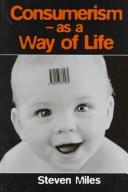
ISBN: 0761952144 9780761952145 Year: 1998 Publisher: London Sage
Abstract | Keywords | Export | Availability | Bookmark
 Loading...
Loading...Choose an application
- Reference Manager
- EndNote
- RefWorks (Direct export to RefWorks)
Sociology of culture --- Consumption (Economics) --- History. --- History --- Consumption (Economics) - History
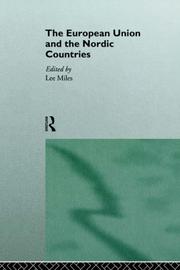
ISBN: 0415124239 9780415124232 Year: 1996 Publisher: London Routledge
Abstract | Keywords | Export | Availability | Bookmark
 Loading...
Loading...Choose an application
- Reference Manager
- EndNote
- RefWorks (Direct export to RefWorks)
International relations. Foreign policy --- European Union --- Scandinavia and Iceland --- European Union countries --- Scandinavia --- Foreign relations --- #SBIB:327.7H21 --- #SBIB:013.IEB --- Ontwikkeling van de Europese Unie (historische en toekomstige evolutie) --- Fennoscandia --- Norden --- Nordic countries --- EU countries --- Euroland --- Europe --- European Union countries - Foreign relations - Scandinavia --- Scandinavia - Foreign relations - European Union countries
Book
ISBN: 9782850883156 2850883158 Year: 2010 Publisher: Paris Citadelles & Mazenod
Abstract | Keywords | Export | Availability | Bookmark
 Loading...
Loading...Choose an application
- Reference Manager
- EndNote
- RefWorks (Direct export to RefWorks)
Ce livre aborde l'histoire de l'architecture sous un angle original, en analysant les matériaux et les formes qui constituent les bâtiments, mais aussi en montrant comment les architectes, ingénieurs et constructeurs, ont aussi bien su répondre aux besoins de leurs contemporains qu'aux défis techniques. Cet ouvrage s'intéresse, par exemple, au toit, à la fenêtre ou au mur comme à des phénomènes universels qui ont évolué durant des milliers d'années. Il aborde cette évolution en décryptant le rôle de l'architecture d'un point de vue sociologique et industriel. Par l'étude d'éléments architecturaux essentiels, - les matériaux et les techniques, les fondations, les murs, portes, toitures, plafonds, fenêtres et ornements architecturaux -, et à travers leurs expressions dans les diverses cultures et au cours des différentes époques historiques, ce livre donne les clés des époques fondamentales de la construction des bâtiments, c'est-à-dire d'une grande partie de notre environnement. Pour ce faire, on trouvera tout au long de ces pages des reproductions en gros plans d'édifices et d'architectes parmi les plus marquants du monde. Un glossaire des termes de l'architecture et de ses principaux styles facilite la compréhension de termes quelque peu spécialisés. Avec plus de 500 photographies en couleur de bâtiments et nombre d'éléments analysés, ce livre témoigne de la créativité et de l'ingéniosité des architectes et des bâtisseurs tout au long des âges. Outre les détails typiques que les photographies permettent de remarquer, plus de 60 illustrations originales - schémas, coupes et dessins techniques - aident à visualiser les éléments architecturaux fondamentaux. On a ici affaire à un très beau livre, pédagogique et attrayant, référence indispensable à toute personne s'intéressant à l'architecture. (synopsis, www.citadelles-mazenod.com)
architectuur --- Architecture --- Technological innovations --- Composition, proportion, etc --- History --- Innovations --- Histoire --- Elément d'architecture --- Histoire de l'architecture --- Dictionnaire --- Histoire de la peinture --- Histoire de la sculpture --- Histoire des arts décoratifs --- Histoire des sciences et des techniques --- Histoire du mobilier --- Composition, proportion, etc. --- Construction --- Composition (architecture) --- Détails (architecture) --- Technique de la construction. --- Histoire.
Book
ISBN: 9781472529107 9781472530981 9781472524607 1472529103 9781472529404 1472529405 Year: 2014 Publisher: London Bloomsbury
Abstract | Keywords | Export | Availability | Bookmark
 Loading...
Loading...Choose an application
- Reference Manager
- EndNote
- RefWorks (Direct export to RefWorks)
"By moving beyond traditional aesthetic categories (beauty, the sublime, the religious), Eco-Aesthetics takes an inter-disciplinary approach bridging the arts, humanities and social sciences and explores what aesthetics might mean in the 21st century. It is one in a series of new, radical aesthetics promoting debate, confronting convention and formulating alternative ways of thinking about art practice. There is no doubt that the social and environmental spheres are interconnected but can art and artists really make a difference to the global environmental crisis? Can art practice meaningfully contribute to the development of sustainable lifestyles? Malcolm Miles explores the strands of eco-art, eco-aesthetics and contemporary aesthetic theories, offering timely critiques of consumerism and globalisation and, ultimately, offers a possible formulation of an engaged eco-aesthetic for the early 21st century"-- "An introduction to a radical new aesthetic theory drawing upon both contemporary theory and art practice"--
architectuur --- Aesthetics --- klimaatveranderingen --- Environmental protection. Environmental technology --- globalization --- kunst --- art [fine art] --- climate change --- ecology --- literature [writings] --- Architecture --- esthetiek --- architecture [discipline] --- Art --- aesthetics --- anno 2000-2099 --- Environment (Aesthetics) --- Arts and society --- Philosophy --- Science --- Arts and society. --- Environment (Aesthetics). --- History --- Aesthetics. --- Criticism & Theory. --- Life Sciences --- Ecology. --- 2000-2099. --- klimaatverandering --- art [discipline] --- literature [documents]
Book
ISBN: 0631133224 9780631133223 Year: 1983 Publisher: Oxford Blackwell
Abstract | Keywords | Export | Availability | Bookmark
 Loading...
Loading...Choose an application
- Reference Manager
- EndNote
- RefWorks (Direct export to RefWorks)
Social psychology --- Attribution (Social psychology) --- 159.95*1 --- Cognitieve psychologie --- 159.95*1 Cognitieve psychologie --- Cognition --- Gestalt psychology --- Social perception
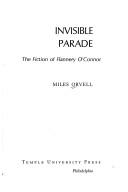
ISBN: 0877220239 9780877220237 Year: 1972 Publisher: Philadelphia (Pa.): Temple university press
Abstract | Keywords | Export | Availability | Bookmark
 Loading...
Loading...Choose an application
- Reference Manager
- EndNote
- RefWorks (Direct export to RefWorks)
O'Connor, Flannery Mary, 1925-1964. A Good Man is Hard to Find --- O'Connor, Flannery Mary, 1925-1964. Good Country People --- O'Connor, Flannery Mary, 1925-1964. Judgement Day --- O'Connor, Flannery Mary, 1925-1964. Parker's Back --- O'Connor, Flannery Mary, 1925-1964. The Artificial Nigger --- O'Connor, Flannery Mary, 1925-1964. The Displaced Person --- O'Connor, Flannery Mary, 1925-1964. The Geranium --- O'Connor, Flannery Mary, 1925-1964. The Violent Bear It Away --- O'Connor, Flannery Mary, 1925-1964. Wise Blood --- Women and literature --- Fiction --- History --- Technique --- O'Connor, Flannery --- Criticism and interpretation --- Southern States --- In literature --- -Fiction --- Metafiction --- Novellas (Short novels) --- Novels --- Stories --- Literature --- Novelists --- -Technique --- Philosophy --- -O'Connor, Mary Flannery --- O'Konnor, Flanneri --- О'Коннор, Фланнери --- -American South --- American Southeast --- Dixie (U.S. : Region) --- Former Confederate States --- South, The --- Southeast (U.S.) --- Southeast United States --- Southeastern States --- Southern United States --- United States, Southern --- -History --- -Criticism and interpretation --- -In literature --- Fiction writing --- Writing, Fiction --- Authorship --- O'Connor, Mary Flannery --- Criticism and interpretation. --- In literature. --- O'Connor, Flannery Mary --- Women and literature - Southern States - History - 20th century --- Fiction - Technique --- O'Connor, Flannery - Criticism and interpretation --- Southern States - In literature
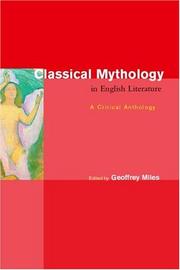
ISBN: 0415147557 0415147549 9780415147545 9780415147552 Year: 1999 Publisher: London ; New York, NY : Routledge,
Abstract | Keywords | Export | Availability | Bookmark
 Loading...
Loading...Choose an application
- Reference Manager
- EndNote
- RefWorks (Direct export to RefWorks)
British literature --- Britse literatuur --- Engelse literatuur --- English literature --- Littérature anglaise --- Littérature britannique --- Mythologie [Klassieke ] in de literatuur --- Mythologie classique dans la littérature --- Mythology [Classical ] in literature --- Mythology, Classical --- Pygmalion (Greek mythology) --- Mythology, classical, in literature --- Orpheus --- Adonis --- 820 --- 291.13 --- Mythe. Vergelijkende mythologie --- 820 Engelse literatuur --- 291.13 Mythe. Vergelijkende mythologie --- Adonis (Greek deity) --- Mythology, Classical, in literature --- Orpheus (Greek mythology) --- Classical mythology --- Mythology, Greek --- Civilization, Classical --- Inklings (Group of writers) --- Nonsense Club (Group of writers) --- Order of the Fancy (Group of writers) --- Classical influences --- Mythology [Classical ] --- Literary collections --- 820 English literature. Literature in English --- English literature. Literature in English --- Mythology, Classical - Literary collections --- Pygmalion (Greek mythology) - Literary collections --- Orpheus - (Greek mythological character) - Literary collections --- Adonis - (Greek deity) - Literary collections --- ENGLISH LITERATURE --- CLASSICAL MYTHOLOGY IN LITERATURE --- PYGMALION (GREEK MYTHOLOGY) --- ADONIS (GREEK DEITY) --- CLASSICAL INFLUENCES --- Orpheus - (Greek mythological character) --- Adonis - (Greek deity)
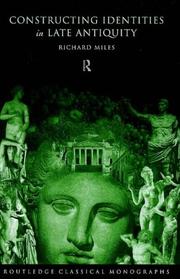
ISBN: 0415194067 1134649924 1280334401 020326035X 9780203260357 1134649916 9780415194068 Year: 1999 Volume: *1 Publisher: London: Routledge,
Abstract | Keywords | Export | Availability | Bookmark
 Loading...
Loading...Choose an application
- Reference Manager
- EndNote
- RefWorks (Direct export to RefWorks)
Examines the theme of identity: geographic, ethnic, religious, status and sex-based. Discussions of Roman texts and images show how constructions of identity and culture contributed to the creation of late antiquity" as a historical concept."
Beschaving [Klassieke ] --- Civilisation classique --- Civilization [Classical ] --- Classical civilization --- Cultuur [Klassieke ] --- Identiteit (Psychologie) in de literatuur --- Identiteit in de literatuur --- Identity (Psychology) in literature --- Identity in literature --- Identité (Psychologie) dans la littérature --- Identité dans la littérature --- Klassieke beschaving --- Klassieke cultuur --- Civilization, Classical. --- Identity (Philosophical concept) in literature. --- Christianity --- Civilisation ancienne --- Christianisme --- Influence. --- Influence --- Rome --- Cultural policy. --- History --- Politique culturelle --- Histoire --- Civilization, Classical --- Identity (Philosophical concept) in literature --- Cultural policy --- 27 "03/05" --- 937.08 --- -Christianity --- Religions --- Church history --- Civilization, Ancient --- Classicism --- Kerkgeschiedenis--?"03/05" --- Geschiedenis van Rome: absolutistisch keizerrijk van Diocletianus tot de val van Rome--(284-476 n. Chr.) --- -Kerkgeschiedenis--?"03/05" --- -27 "03/05" --- 937.08 Geschiedenis van Rome: absolutistisch keizerrijk van Diocletianus tot de val van Rome--(284-476 n. Chr.) --- Italy --- Regions & Countries - Europe --- History & Archaeology --- -Identity in literature --- -Civilization, Classical --- Identité dans la littérature --- Rim --- Roman Empire --- Roman Republic (510-30 B.C.) --- Romi (Empire) --- Byzantine Empire --- Rome (Italy) --- Germanic invasions, 3d-6th centuries --- Christianity - Rome - Influence --- Rome - Cultural policy --- Rome - History - Germanic Invasions, 3rd-6th centuries
Book
ISBN: 9780567310026 9780567480101 0567480100 0567310027 Year: 2010 Publisher: London Clark
Abstract | Keywords | Export | Availability | Bookmark
 Loading...
Loading...Choose an application
- Reference Manager
- EndNote
- RefWorks (Direct export to RefWorks)
Christianity and politics --- History --- Augustine, --- Political and social views. --- 276 =71 AUGUSTINUS:1 --- -Christianity --- Church and politics --- Politics and Christianity --- Politics and the church --- Political science --- Latijnse patrologie-:-Filosofie. Psychologie--AUGUSTINUS --- -Political aspects --- Avgustin, Blazhennyĭ, --- Augustinus, Aurelius, --- Augustyn, --- Augustin, --- Ughasṭīnūs, --- Agostino, --- Agustí, --- Augoustinos, --- Agostino di Tagaste, --- Aurelius Augustinus, --- Augustinus, --- Agostino d'Ippona, --- Agustín, --- Aurelio Agostino, --- Episkopos Ippōnos Augoustinos --- Augoustinos Ipponos --- Agostinho, --- Aurelli Augustini, --- Augustini, Aurelli, --- Aurelii Augustini, --- Augustini, Aurelii, --- Ōgostinos, --- Agostino, Aurelio, --- אוגוסטינוס הקדוש --- أغسطينوس، --- 奥古斯丁 --- Agustín de Hipona --- San Agustín --- Augustin d'Hippone --- Pseudo-Augustinus --- -Latijnse patrologie-:-Filosofie. Psychologie--AUGUSTINUS --- -Augustine, --- Episkopos Ippōnos Augoustinos, --- Augoustinos Ipponos, --- Christianity --- Political aspects --- Avgustin, --- Augustinus, Aurelius --- Agostinho --- Augustine of Hippo --- Augustine d'Hippone --- Agostino d'Ippona --- Augustinus Hipponensis, sanctus --- Sant'Agostino --- Augustinus van Hippo --- Aurelius Augustinus --- Aurelio Agostino --- 聖アウグスティヌス --- アウグスティヌス --- Augustine --- Christianity and politics - History - To 1500. --- Augustine, - Saint, Bishop of Hippo - Political and social views. --- Augustine, - Saint, Bishop of Hippo
Book
ISBN: 9780415543224 9780415499996 9780203080399 0415499992 0415543223 9781136167027 9781136166976 9781136167010 Year: 2013 Publisher: Abingdon ; New York: Routledge,
Abstract | Keywords | Export | Availability | Bookmark
 Loading...
Loading...Choose an application
- Reference Manager
- EndNote
- RefWorks (Direct export to RefWorks)
In many cities across the world, particularly in Europe, old buildings form a prominent part of the built environment, and we often take it for granted that their contribution is intrinsically positive. How has that widely-shared belief come about, and is its continued general acceptance inevitable?Certainly, ancient structures have long been treated with care and reverence in many societies, including classical Rome and Greece. But only in modern Europe and America, in the last two centuries, has this care been elaborated and energised into a forceful, dynamic ideology: a ‘Conservation Movement’, infused with a sense of historical destiny and loss, that paradoxically shared many of the characteristics of Enlightenment modernity. The close inter-relationship between conservation and modern civilisation was most dramatically heightened in periods of war or social upheaval, beginning with the French Revolution, and rising to a tragic climax in the 20th-century age of totalitarian extremism; more recently the troubled relationship of ‘heritage’ and global commercialism has become dominant.Miles Glendinning’s new book authoritatively presents, for the first time, the entire history of this architectural Conservation Movement, and traces its dramatic fluctuations in ideas and popularity, ending by questioning whether its recent international ascendancy can last indefinitely.
Architecture --- Conservation and restoration --- History --- Conservation et restauration --- Histoire --- Monuments historiques --- 72.025 --- 008 --- Architecture, Western (Western countries) --- Building design --- Buildings --- Construction --- Western architecture (Western countries) --- Art --- Building --- History. --- Monumentenzorg --- Restauratie (architectuur) --- Erfgoed --- Design and construction --- Conservation and restoration&delete& --- Histoire. --- 72.025(091) --- Architectonisch erfgoed ; conservatie ; geschiedenis --- Monumentenzorg ; historische gebouwen ; conservatie --- Architectuur ; renovatie, restauratie ; geschiedenis --- Renovatie (architectuur) --- Architecture, Primitive --- Architecture - Conservation and restoration - History
| Listing 1 - 10 of 261 | << page >> |
Sort by
|

 Search
Search Feedback
Feedback About UniCat
About UniCat  Help
Help News
News